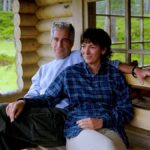Bajau Nomads can hold their breath underwater for a few minutes: Photo Credit: KK Stevens/Shutterstock
In recent years, scientific research has revealed the incredible human abilities that were once thought to belong to the realm of fiction. The ability to be labelled “superpower” in popular culture is increasingly understood as a biologically based phenomenon. These extraordinary properties arise from a mixture of genetic inheritance, evolutionary adaptation, and rigorous physical or mental training. This growing understanding shapes the way we think about human potential and performance.
The term “superpower” may be sensational, but it captures a strange feeling inspired by individuals who can achieve feats well beyond the usual limits. From thriving in extreme environments to showing incredible endurance, strength or speed, some people show abilities beyond the average human ability. With careful scientific research, many of these extraordinary traits can be traced back to specific genetic variation or long-term conditioning. Some of these capabilities have evolved for thousands of years as adaptations to specific environmental challenges. Others are developed through intentional, intensive training that alters the body’s response to stress and danger. Together, when genetics and the environment intersect, they offer an attractive glimpse into the breadth of human abilities.
There are five well-documented examples of these exceptional human characteristics.
- High Altitude Endurance – Sherpa People: The Sherpa community has lived for generations of the Himalayas at an altitude of over 2,500 meters, and demonstrates its unique ability to function in an oxygen-thin environment. Their genetic adaptation allows them to maintain efficient oxygen use, resist high-grade diseases, and perform physically demanding tasks such as heavily loaded climbing and transport where others struggle or fail.
- Deep Diving Ability – Nomads of the Bajau Sea: Bajau, a sailor from Southeast Asia, spends much of his lifetime for food without modern scuba equipment. Scientists have discovered that they own a genetically large spleen, an organ that stores oxygenated blood and releases it during long-term dives. This biological property allows them to dive deeper than most humans and maintain their water for longer, often reaching depths of up to 60 meters and hold their breath for a few minutes.
- Explosive Strength – Athlete ACTN3 Gene: Studies on elite athletes have identified a genetic variant called Actn3. This affects the development of fast muscle muscle fibers, which causes rapid and powerful movements. Individuals with this genetic profile are more likely to excel in sports that require sprinting, jumping, or lifting, as their muscles can generate force more quickly and efficiently.
- Extreme Muscle Growth – Myostatin Mutation: Some people carry rare mutations in the MSTN gene, which produces myostatin, a protein that restricts muscle growth. These mutations reduce myostatin function and significantly increase muscle mass and strength without intensive training. This condition, known as “hypermuscularity,” illustrates how genetic factors can dramatically shape physical capabilities.
- Training to suppress fear – Elite climbers: Genetics plays a role in many traits, but intense mental and physical training can also unleash extraordinary abilities. For example, professional climbers who run high-risk free solo ascents will have an unusually low fear response. Research suggests that after years of exposure to dangerous situations, their brains adapt to more effectively regulate fear, allowing them to focus gently and under extreme pressure.
As scientific knowledge advances in 2025, continued research into human genetics and physiology continues to uncover the extraordinary ways in which biology and training intersect. These real-life “superpowers” challenge traditional ideas about human limitations and provide valuable insights in medicine, sports and psychology. Understanding these exceptional traits not only expands our view on human potential, but also opens up new possibilities for treating health conditions related to oxygen deprivation, muscle degeneration and stress management. The evolving science behind these phenomena highlights how genetics and perseverance combine to create capabilities that once seemed impossible.








